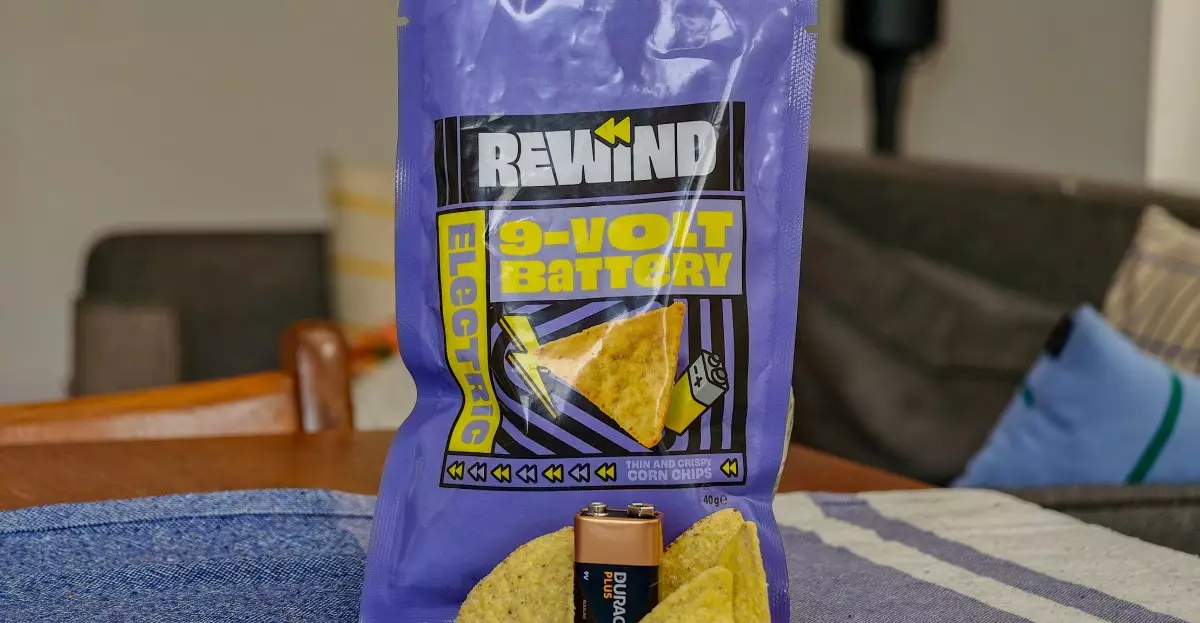The development of unconventional flavors in the snack industry reveals a bold desire to push sensory boundaries and challenge consumer expectations. Rewind’s latest creation—corn chips flavored to evoke the metallic, electrical tang of a 9V battery—embodies this rebellious spirit. While most snack brands rely on familiar, comforting tastes like cheese or paprika, this product ventures into the realm of shock therapy, transforming the act of snacking into an experience that questions the very notion of flavor. Such experimentation underscores a broader trend in food innovation: using the unexpected not merely for novelty but as a means of engaging consumers on a visceral level.
This approach demonstrates an intriguing marketing strategy—standing out amidst a sea of sameness requires more than just flavor; it demands an emotional or sensory jolt. By mimicking something as unusual as a battery’s metallic aftertaste, Rewind aims to create a memorable impression. It’s a calculated risk that speaks to a generation that craves experiences, even if those experiences are a bit uncomfortable or bizarre. The question is, how far can this trend go? Will consumers embrace these culinary daredevilry, or is it destined for limited editions and novelty shelves? The answer lies in our collective appetite for pushing STN (Sensory Tolerance Notions), which is expanding rapidly.
The Psychology of Nostalgia and Shock in Food Innovation
The allure of items like Rewind’s battery-flavored chips is rooted in the power of nostalgia mixed with daring novelty. The act of licking a battery as a child might seem trivial, but such memories evoke a complex set of sensations—danger, excitement, rebellion. By channeling this sentiment into a snack, Rewind taps into an emotional reservoir that transcends taste buds. It’s less about the flavor itself and more about the story, the memory, and the thrill associated with it. This strategy exemplifies how modern food companies manipulate psychological triggers to craft products that are not merely edible but emotionally charged.
However, these endeavors carry a fundamental risk: they border on discomfort. The flavor’s metallic tang, reminiscent of battery metal combined with a hint of acidity, is intentionally unpalatable to those seeking comfort in their snacks. This raises questions about the future of such products—is this merely a fleeting trend designed to provoke conversation, or does it mark a shift towards embracing the bizarre as a legitimate component of culinary artistry? As consumers become more experimental-minded, we may see a rise in products that challenge our sense of what food should be—offering an intoxicating blend of shock, nostalgia, and creativity.
The Fine Line Between Innovation and Regulation
Despite the allure, food experimentation like Rewind’s 9V battery chips exists within a fragile regulatory and safety landscape. While the company explicitly states that licking a real battery is not recommended, the flavor aims to mimic the metallic sensation safely, employing additives like citric acid, sodium bicarbonate, and mineral salts. This highlights an essential aspect of culinary innovation: transforming the unpalatable into a safe, engineered illusion. It’s a testament to how scientific understanding and culinary artistry can intersect to create something surreal yet edible.
Moreover, such products force industries and regulators to reconsider how far they can or should go in pushing flavor boundaries. The line between playful experimentation and potential health risk is thin; hence, transparency and safety are paramount. Rewind’s approach emphasizes that innovation does not need to compromise safety but can instead leverage science to craft experiences that are provocative yet secure. This boundary-pushing demonstrates the evolving landscape of food science—where the limits of flavor are constantly redefined, sometimes at the expense of convention but never at the expense of safety.
In navigating these uncharted culinary waters, brands like Rewind are not just creating snacks—they’re challenging what it means to taste, remember, and experience food in the modern age.

